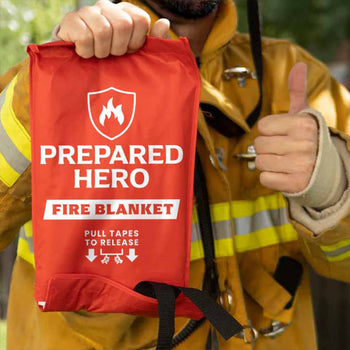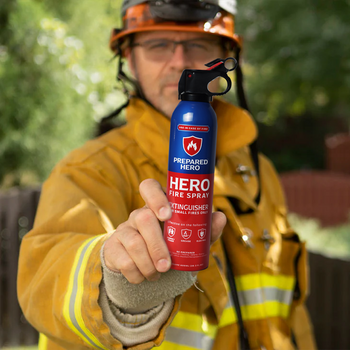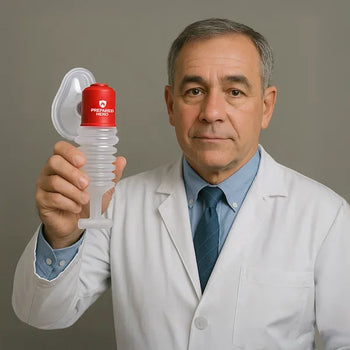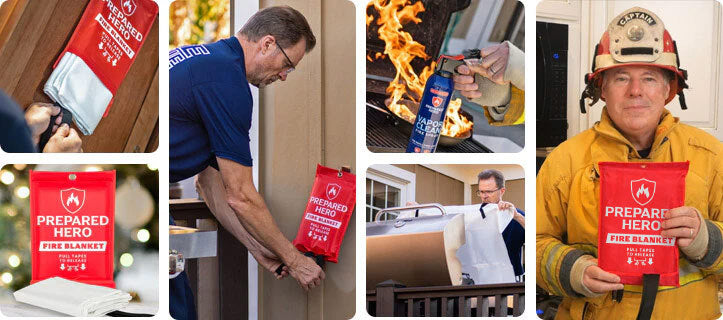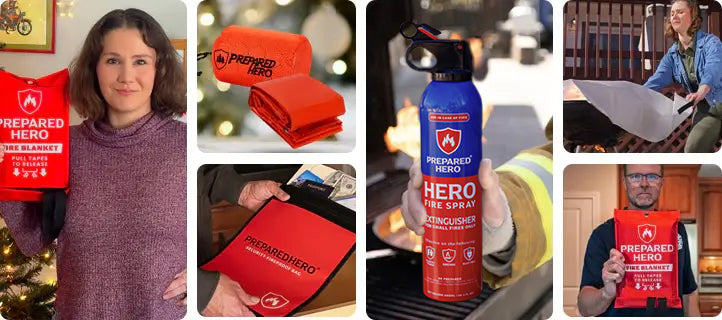Where you put your smoke detectors matters just as much as installing them. Proper placement makes sure they can detect...
A fire blanket is a handy tool for putting out small fires quickly. But as much as we want them to work in any fire emergency, there are times when we have to use them with other fire safety tools or not use them at all.
Knowing when not to use a fire blanket is just as important as knowing when to use one. In this article, we’ll go over the instances when you should not use a fire blanket so you can make an informed decision during an emergency.
When the Fire Is Too Large

Fire blankets are made to contain small fires. They work by depleting fires of oxygen, a component of the fire triangle. However, this only works if the fire blanket covers the affected area.
For instance, a fire blanket is useful in a kitchen because it can stop grease fires that start in a pan. Since a fire blanket is bigger than a pan, it can completely cover the affected area, quickly putting out the fire.
However, the affected area can be bigger than a fire blanket. If this is the case, you should not use a fire blanket because it can’t fully cover the fire. Oxygen will continue feeding the flames, making it harder to put out the fire by yourself.
Plus, a large fire makes it dangerous to stay close enough to use a fire blanket. It’s safer to evacuate your house and call the fire department in this situation.
When the Fire Is Growing Too Fast

According to the US Department of Homeland Security, a small flame can turn into a major fire in as fast as 30 seconds. It can then only take minutes for a room to be filled with smoke or a house to be engulfed in flames.
Fire can spread quickly, and there’s not much you can do about it if it happens. Once the fire spreads beyond the affected area, a fire blanket is not enough to cover multiple areas at once. It’s safer to use a fire extinguisher or evacuate and call for professional help. Remember, fast-spreading fires need immediate action using more powerful fire safety tools.
Plus, a flashover might occur, which is more dangerous than regular fires. It happens when items in a room heat up, auto-ignite, and release flammable gasses. According to the Federal Emergency Management Agency, the temperature in the hot gas layer reaches 500°C (932°F) to 600°C (1,112 °F) during a flashover.
If the fire is quickly spreading and it’s beyond your control, evacuate and call the fire department immediately.
When the Fire Blanket Is Damaged or Old

You should also not use a fire blanket if it is damaged or old. You see, a fire blanket works by cutting off the oxygen supply. But oxygen can get through if there are holes, tears, or other damages. As a result, the fire will continue burning or spread to other areas.
A damaged or old fire blanket may also be less heat-resistant, which means it might burn or not contain the flames. Wear and tear also weaken the fire blanket’s material over time, making it less reliable during a fire emergency. Imagine having a fire in front of you, grabbing your fire blanket, and knowing it doesn’t work. It's not a safe sight.
Using a blanket in poor condition could put you and others at risk, so it's important to regularly inspect and care for your fire blanket. If you see anything wrong with it, replace it as soon as possible.
If you want a fire blanket that doesn’t expire, check out Prepared Hero’s Fire Blanket. You can also reuse it as long as it’s not damaged by fire. Plus, it’s made of durable fire-resistant materials that conform to CE safety standards (EN 1896:2019).
When Accelerants Fuel the Fire

Fire blankets are also not recommended for fires by accelerants like kerosene, gasoline, and diesel. They’re highly flammable and create fast-spreading flames that a fire blanket can’t contain when ignited.
In addition, these types of fires can cause splattering or flare-ups, which can burn your skin when you get close enough to use a fire blanket. Since you can’t get close enough to the fire, your fire blanket can’t cover the affected area, letting flames escape and continue burning.
Accelerants can also soak into surfaces, which can reignite even after the flames die. In this case, it’s better to use a fire spray or extinguisher made for flammable liquids. And we can’t say this enough: if you can’t handle the fire by yourself, leave your house and call the fire department.
When the Power Source Is Not Turned Off

You can use fire blankets on electrical fires. While they don’t conduct electricity, you should turn off the power source first. Doing this lets you use the fire blanket without being electrocuted.
Aside from the risk of being electrocuted, using a fire blanket on an electrical fire comes with other risks. Electrical fires involve wires and circuit boards that can continue sparking after the flames die. While a fire blanket can extinguish the fire, it can reignite if the power source is still active.
Lastly, some electrical fires happen in hard-to-reach places, such as inside walls or behind appliances. This makes it difficult for you to use a fire blanket. If this happens, use a fire spray or fire extinguisher instead.
When The Fire Is Close to Exploding

Using a fire blanket when there’s a risk of explosion is dangerous for many reasons. For one, fire blankets put out fires by cutting off their oxygen supply. But if there’s a risk of an explosion, the fire blanket might disturb the fire and trigger it.
Explosions also happen abruptly and forcefully, which can spread flames and debris. If the fire blanket can’t cover the entire fire, the flames and debris will be uncontrollable. Handling fires that might explode also requires more knowledge and powerful equipment, so it’s best to leave the affected area and call the authorities.
When the Fire Involves Toxic Chemicals or Fumes

Fires caused by toxic chemicals release dangerous gasses. Since a fire blanket can’t fully filter smoke, it can’t contain toxic fumes. As a result, it will spread and cause respiratory issues. The last thing you want during a fire is to become unconscious.
Some chemicals might also react when covered or disturbed, so it’s best not to use a fire blanket. Unless you’re trained to put out toxic chemical fires, get out of the building immediately and call 911.
When Metals Cause the Fire

While fire blankets can put out small metal fires, they’re not recommended for those involving metals with high ignition temperatures.
For example, if your fire blanket can handle temperatures up to 500°C, you should not use it to put out a metal fire with an ignition temperature of over 500°C.
Plus, flammable metals like aluminum, lithium, and phosphorus can ignite and burn intensely, requiring fire extinguishers to put out the metal fire. If you don’t have the right type of fire extinguisher, call the fire department right away.
Conclusion
Knowing when to use a fire blanket is important to your safety. While it’s always useful, there are times when it’s not the best choice. If you need another layer of protection against fire, check out this fire spray. It’s non-toxic, easy to use, and can put out fires in seconds. Stay prepared, hero!


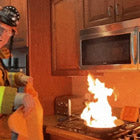 Fire
Fire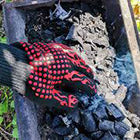 Safety
Safety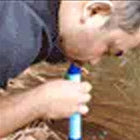 Survival
Survival Protection
Protection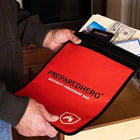 New
New
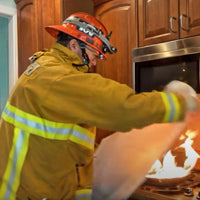 Fire
Fire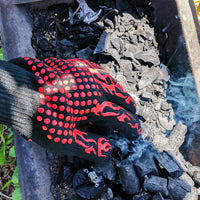 Safety
Safety Survival
Survival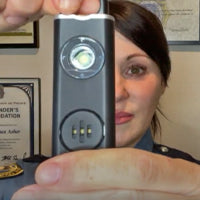 Protection
Protection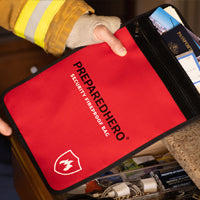 New
New
